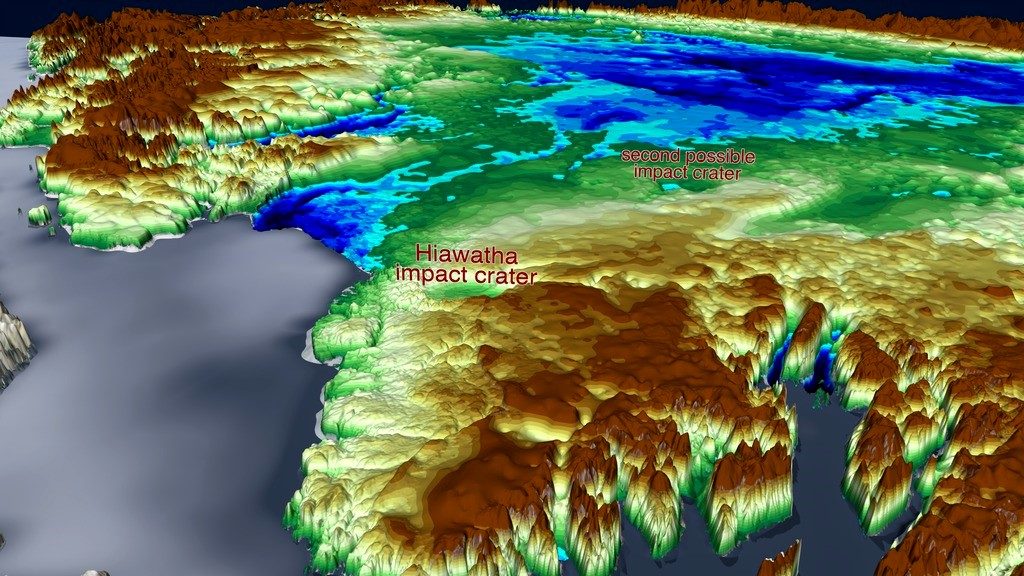A possible second large meteorite crater found under the ice in Greenland
In a new study published in the scientific journal Geophysical Research Letters, Professor Kurt H. Kjær from the DNRF’s Center for GeoGenetics, together with American researchers from NASA and other agencies, sets forth the discovery of a possible new impact crater underneath the ice sheet in Northwestern Greenland. This discovery happened only a few months after a similar one.

At the end of 2018, an international research team led by Professor Kurt H. Kjær, from the DNRF’s Center for GeoGenetics at the University of Copenhagen, presented the discovery of a gigantic meteorite crater underneath the ice sheet at the Hiawatha glacier in Northwest Greenland. By analyzing melting water that was transported from the underground of the Hiawatha glacier, the researchers could confirm that the crater was most likely caused by an iron meteorite. The discovery was the first time a crater of this size has been found under one of the Earth’s ice caps.
But new radar measurements now indicate that Professor Kjær, together with American researchers from NASA and other agencies, may have found another meteorite crater not far from the first one. If it is indeed a meteorite crater, it will be even bigger than the Hiawatha crater and may also have been created during the latest ice age.
“When we found Hiawatha, it was obvious to screen the entire area for more craters. And then we discovered this hole, located 183 kilometers from the first one and thus almost a neighbor hole. But we do not have all of the same landscape characteristics as with the first one. We do not have any “ground proof” because we would not be able to control which melting water would come from that hole,” said Professor Kjær.
Read more about the discovery of Hiawatha in an article by the DNRF here
With the help of extremely advanced radar technology developed by the CRESIS Institute at Kansas University in the US, the researchers were able to scan the structure of the landscape underneath the thick layer of ice, and therefore, they were able to identify gigantic marks under the Greenland ice sheet. The scanning pictures from the radar measurements indicate that it might be a new meteorite crater, but nothing has been confirmed yet.
If the discovery is, in fact, a new meteorite crater, it will be – together with the Hiawatha crater from last year – among the largest that we know of worldwide. At 31 kilometers in diameter, the Hiawatha crater has been ranked as the 25th largest crater. The possible new crater seems to have a diameter of no less than 36 kilometers, which would make it the 22nd largest according to world rankings.
“If we have calculated correctly, it is incredible. Then we will have two giant asteroids that have come through the atmosphere within the same time frame and relatively close to each other, and on top of that, we are talking about a time when people have lived on Earth,” said Professor Kjær.
Det nye mulige krater vil blive opkaldt efter den verdensberømte glaciolog Stan Paterson, som døde i 2013, 82 år gammel.
Read the scientific article in Geophysical Research Letters here.
Further information can be found at Videnskab.dk here (in Danish).
Read more about the discovery at NASA Scientific Visualization Studio her.
